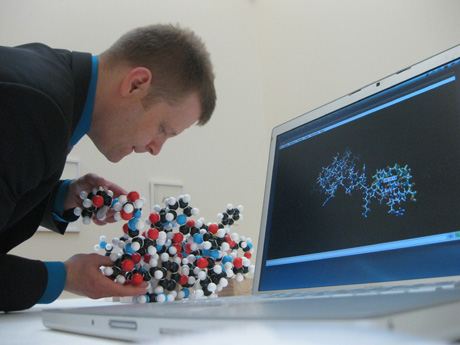The Royal Wedding has shut down much of Britain, preventing me from getting a preview of the Text Festival before events begin this weekend, so I am not going to be able to blog about the experience in time for publication on Harriet. Tony Trehy, however, has posted one of his curatorial statements about his conception of the festival, and I can respond in part to some of his observations.
Tony Trehy observes that, because many practitioners of visual poetry compose their work on computers for publication online, many poets have not considered the aesthetic procedure for display of such work offline, especially when presented within the context of a gallery—and in fact, many contributors have simply submitted their work to him in the form of electronic files for output without stipulating the media for production or the scale for exhibition (as if any page, at any size, might do). I find this fact surprising, given that practitioners of visual poetry often take pride in their concerted attention to the "materiality" of language itself (but then again, such digitization of language may have caused these artists to think that such "materiality" has simply become an afterthought, taking whatever forms or media might be demanded by occasion, once the work leaves the ethereality of the Internet).
Ron Silliman (the Language poet) is going to be displaying his first work ever commissioned by a gallery, and his contribution consists of a neon sign, which simply reads: "Poetry has been Bury, Bury good to me"—a punning groaner to be reinstalled as an artwork in the tram station at Bury when the festival finishes. Silliman appears to have submitted a punchline that almost seems radically out of character for him—a poet renowned in part for having invented the New Sentence, in which he concatenates a series of uncorrelated statements, each of which demonstrates an extraordinary attentiveness to the poetic detail of quotidian experience. Of course, the neon sign has been typeset wittily so as to editorialize upon the submitted statement by suggesting the phrase: "Poetry/ Bury, Bury/ me"—a phrase that almost brings to mind, what Trehy calls, "the urge to over-production," characteristic in the output of visual poetry itself….

Poetry Has Been Bury, Bury Good to Me
Derek Beaulieu has, in turn, submitted for display his work entitled A Box of Nothing, in which he responds to British cuts in the arts, by creating an example of "nothing," to be insured for the value of £25,000 (equivalent to the average salary of a cultural worker in the UK before the artistic cutbacks). Beaulieu purchases a box for $3.95, and then he ships it, via UPS, from Calgary to Bury, only to discover that the bureaucracy at UPS has misgivings about shipping a container, devoid of any contents, whereupon he has to insert a sheet of blank paper, so that UPS can identify the box as a container for "documents." The act of shipping the box creates a work of visual poetry, in the form of every stamped barcode used to track the parcel across borders. The artwork makes a statement about the circulation of art in an era of capital, in which no one can even guarantee the "safety" of nothing….
Both of these artworks may seem out of context in a typical gallery (where the idioms of novelty, glamour, and fashion might prevail)—but in fact, both poets respond humbly (albeit in disparate ways) to the public milieu beyond the gallery itself. I think that the festival provides us poets with an opportunity to experiment generously with our language, doing so in a manner that might "up our game," so to speak, goading us to transform our practice so that it might address the world of art more plausibly. I certainly look forward to seeing the poetic effect of these experiments upon our audience this weekend….
Christian Bök is the author of Crystallography (Coach House Press, 1994), a pataphysical encyclopedia...
Read Full Biography



